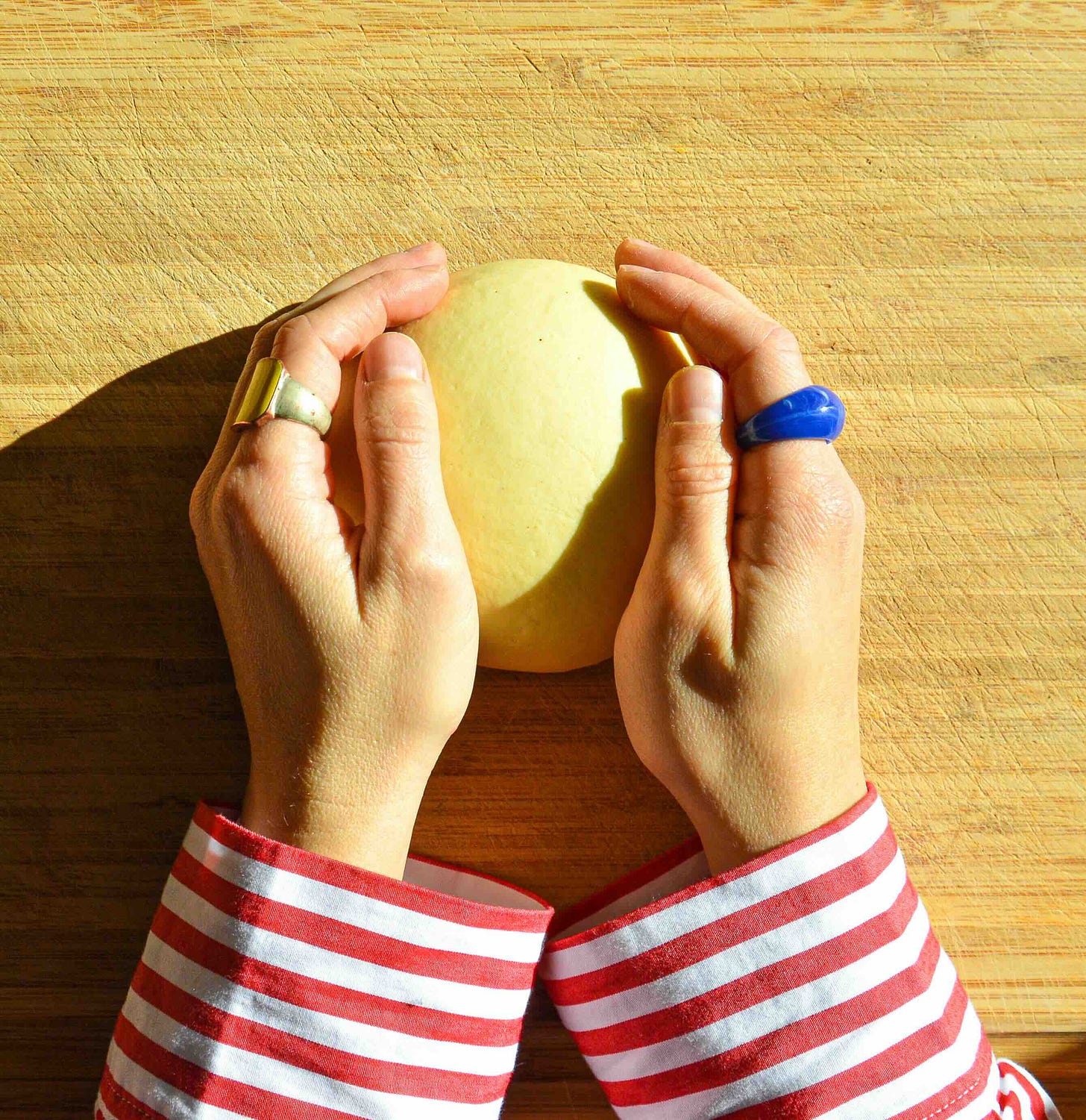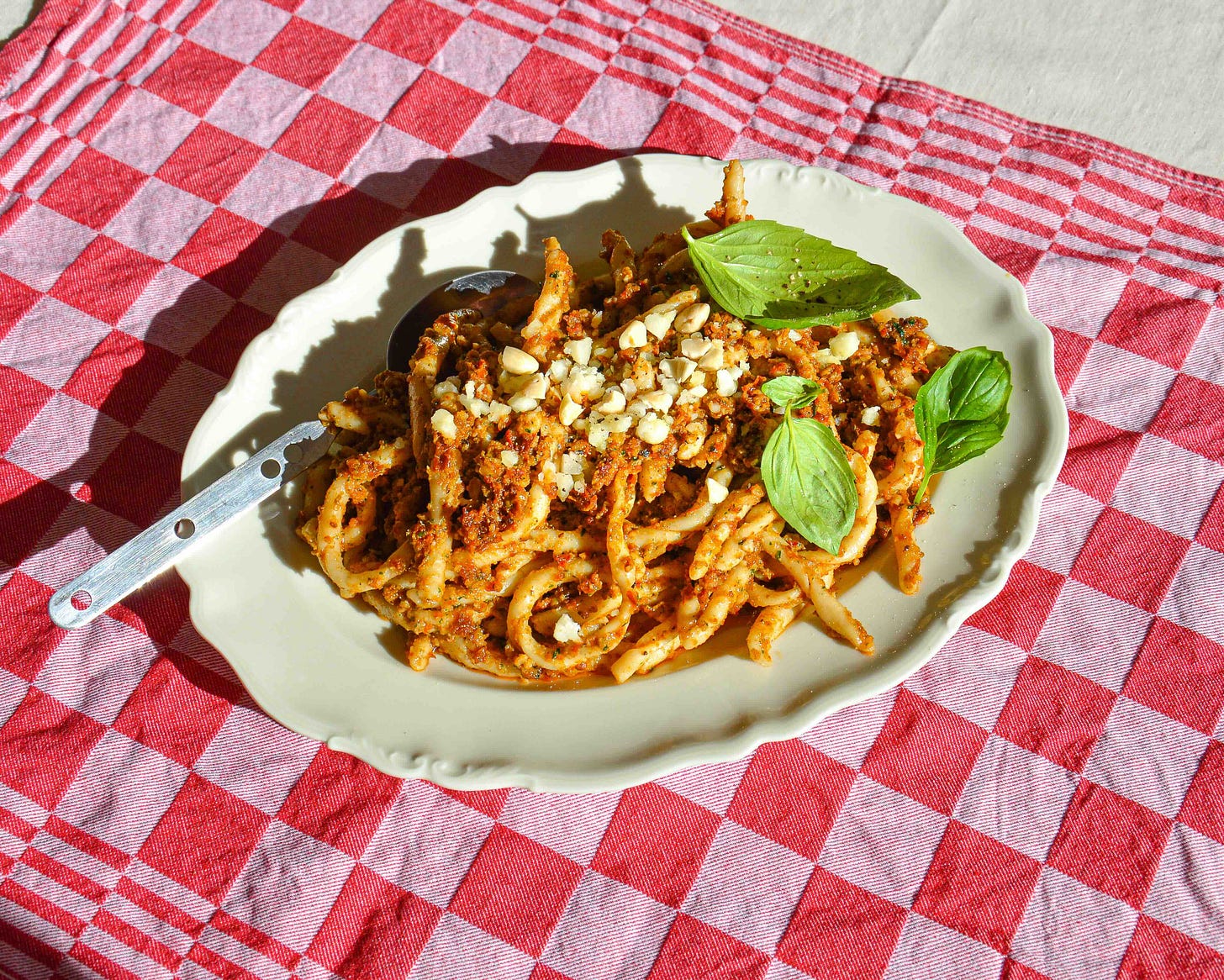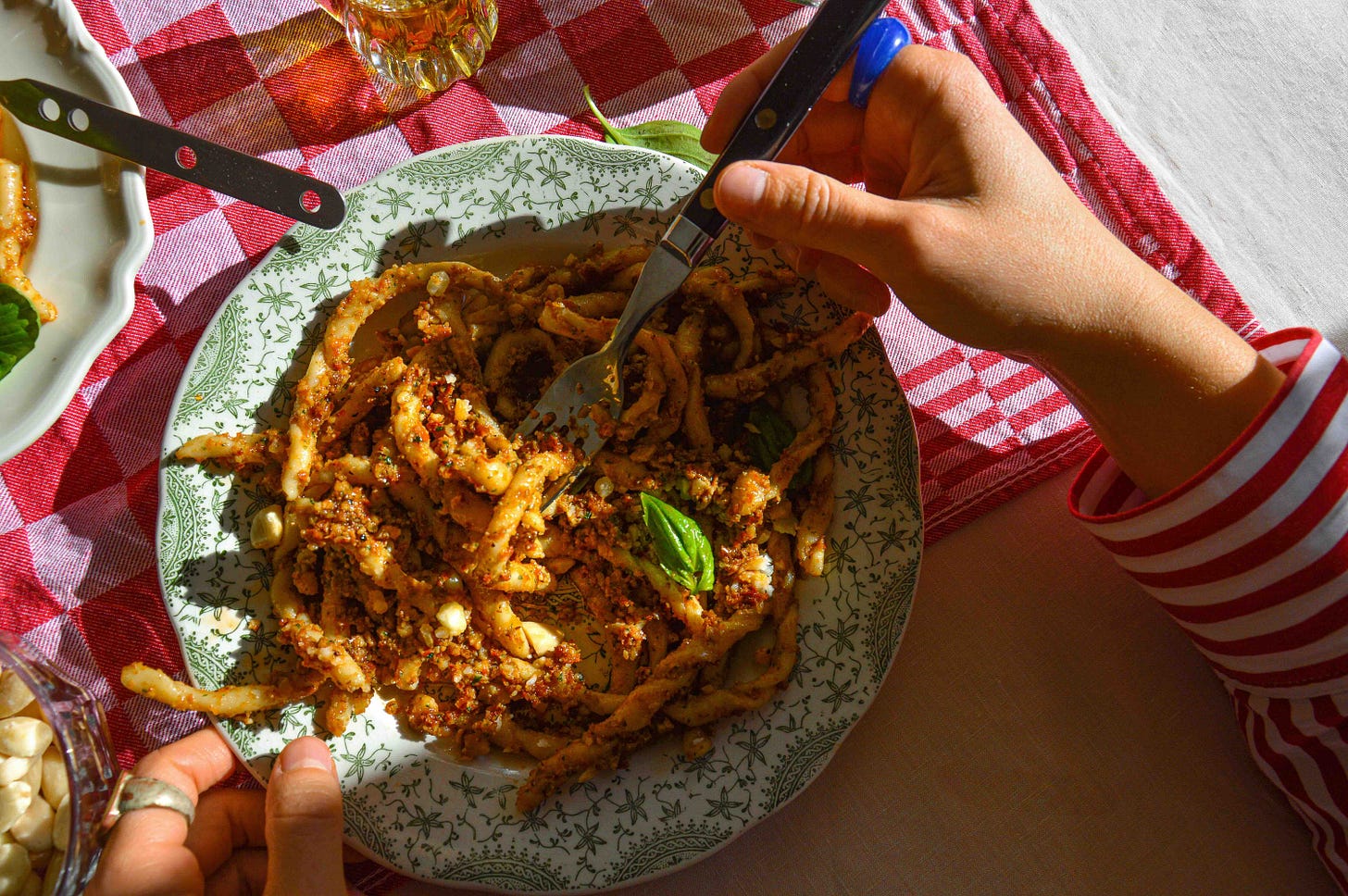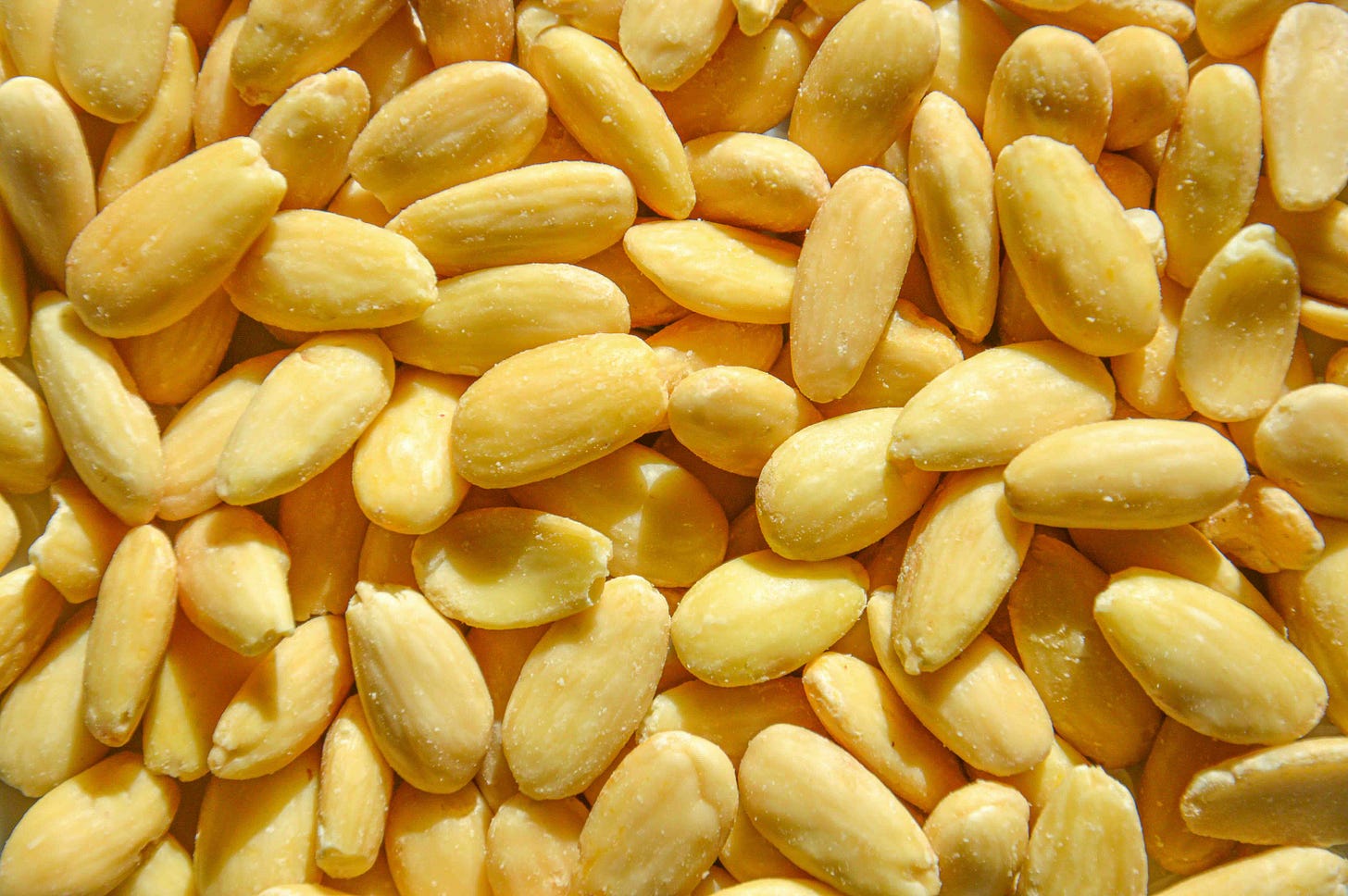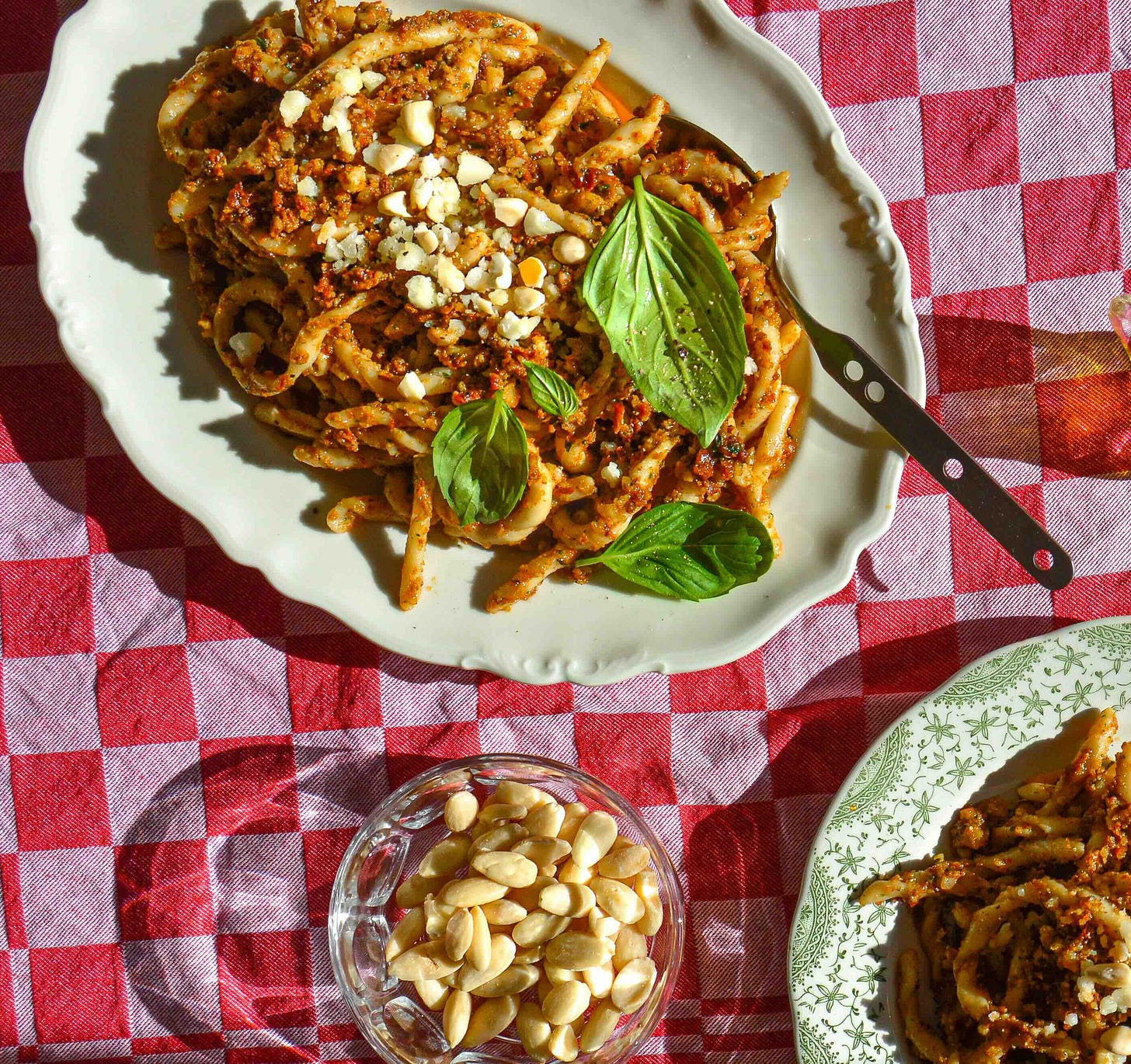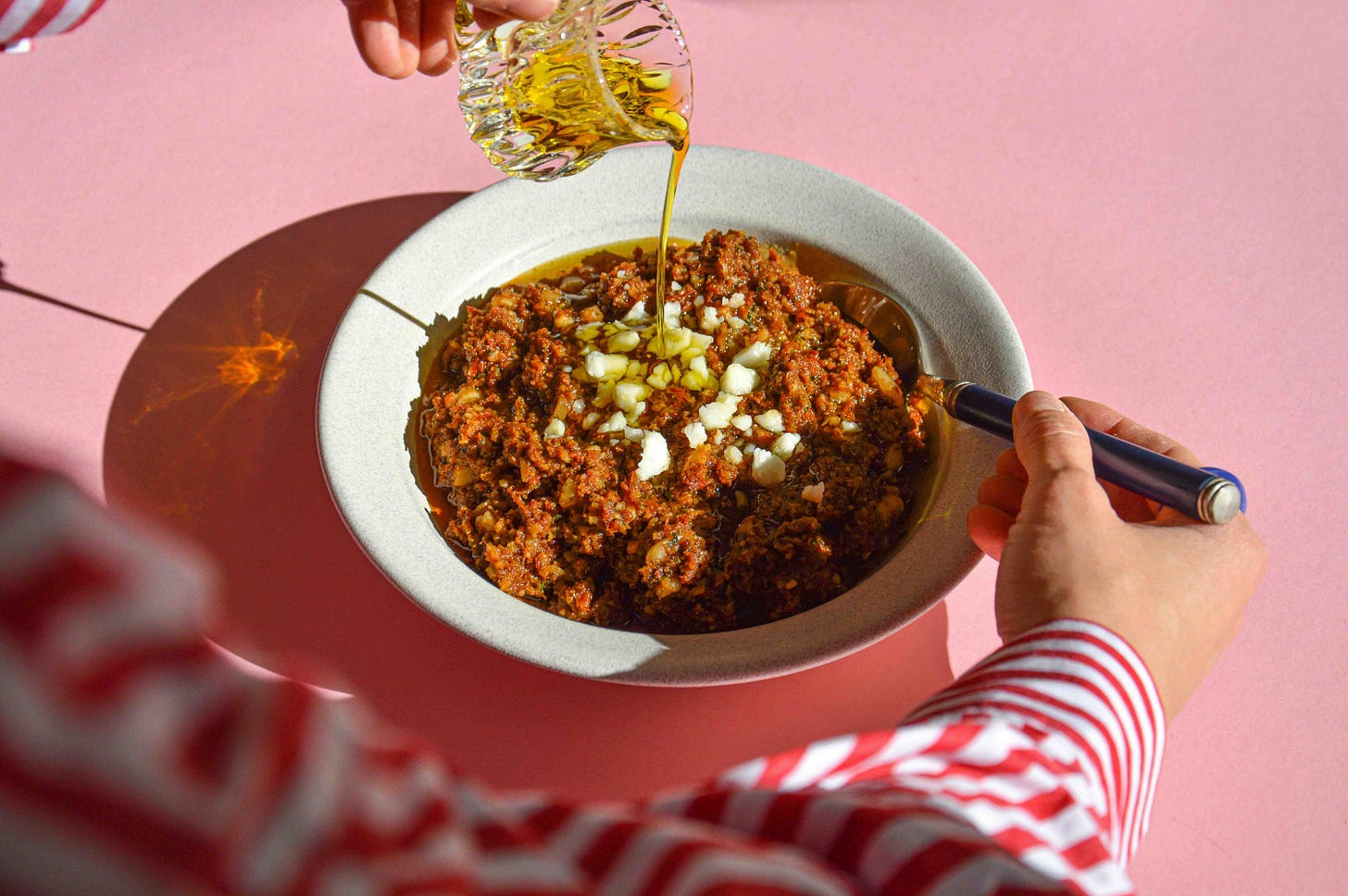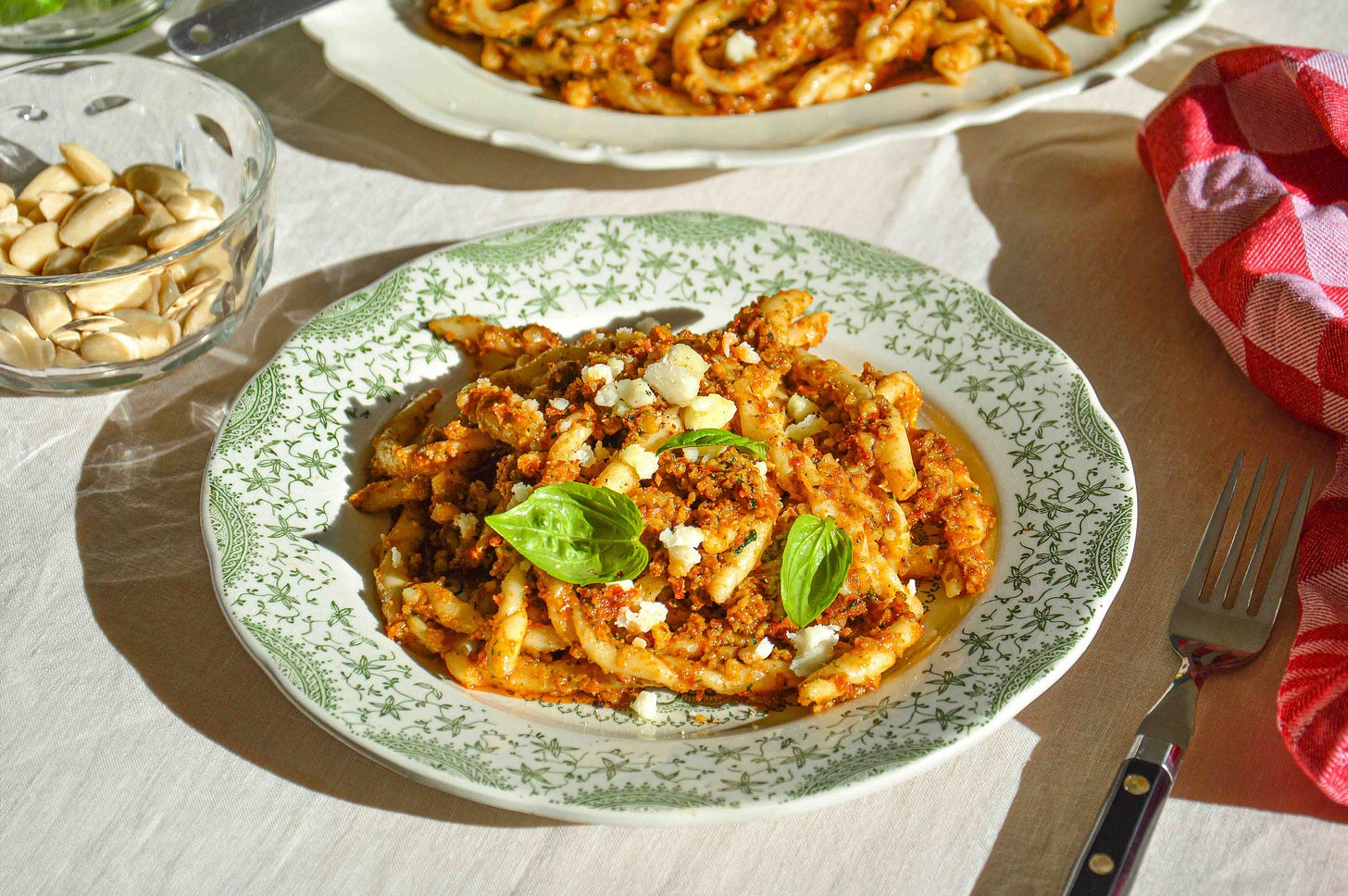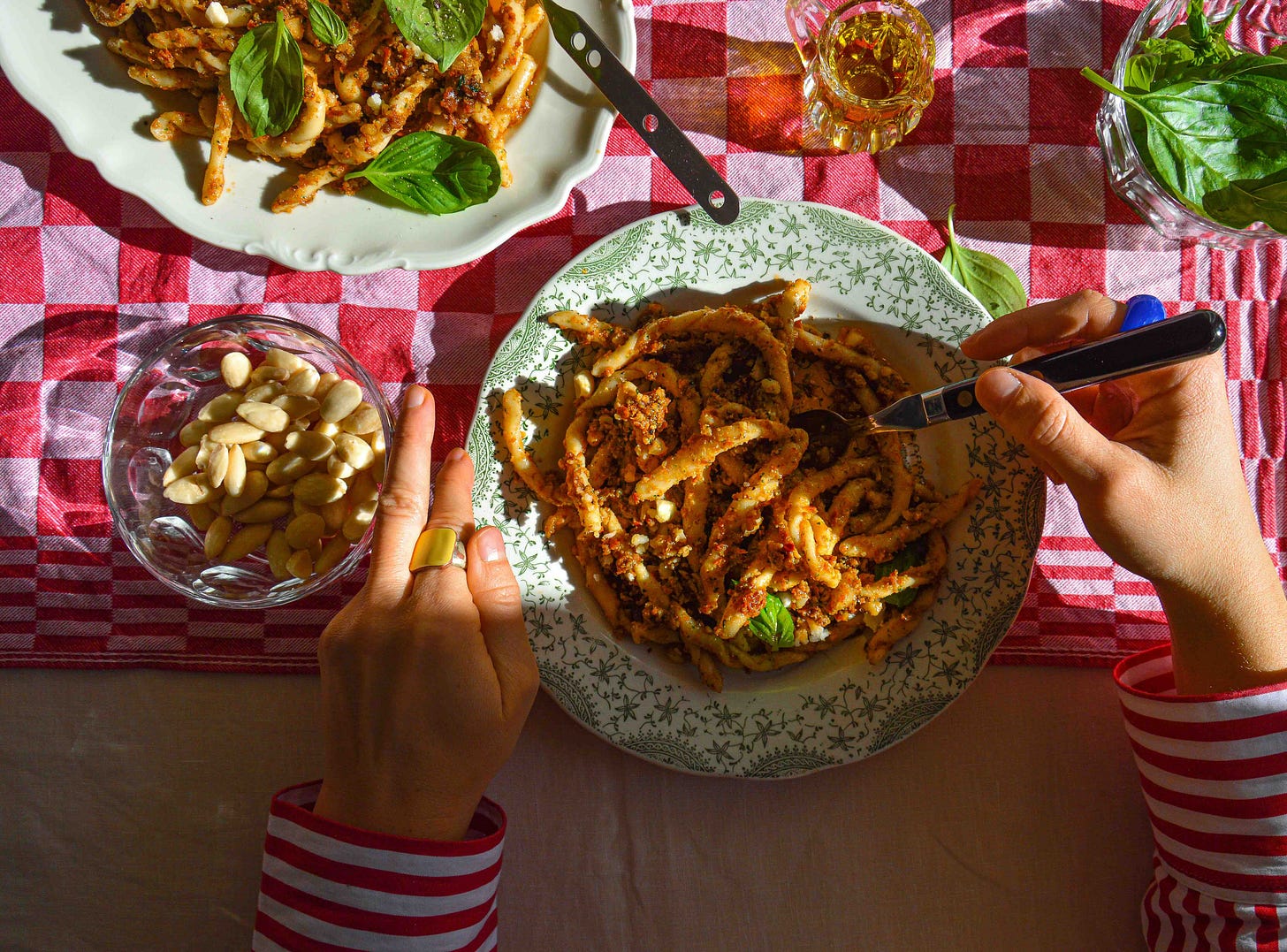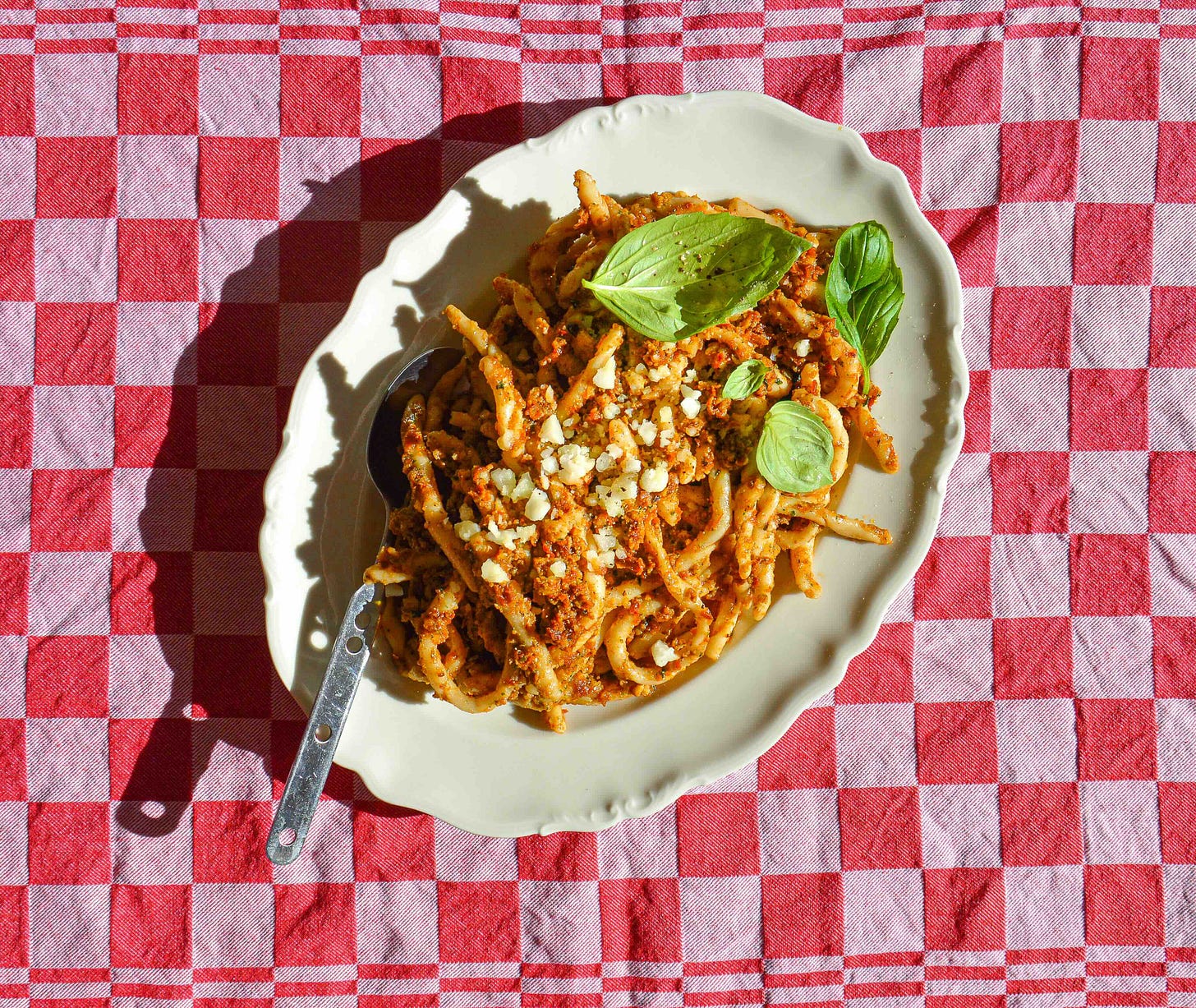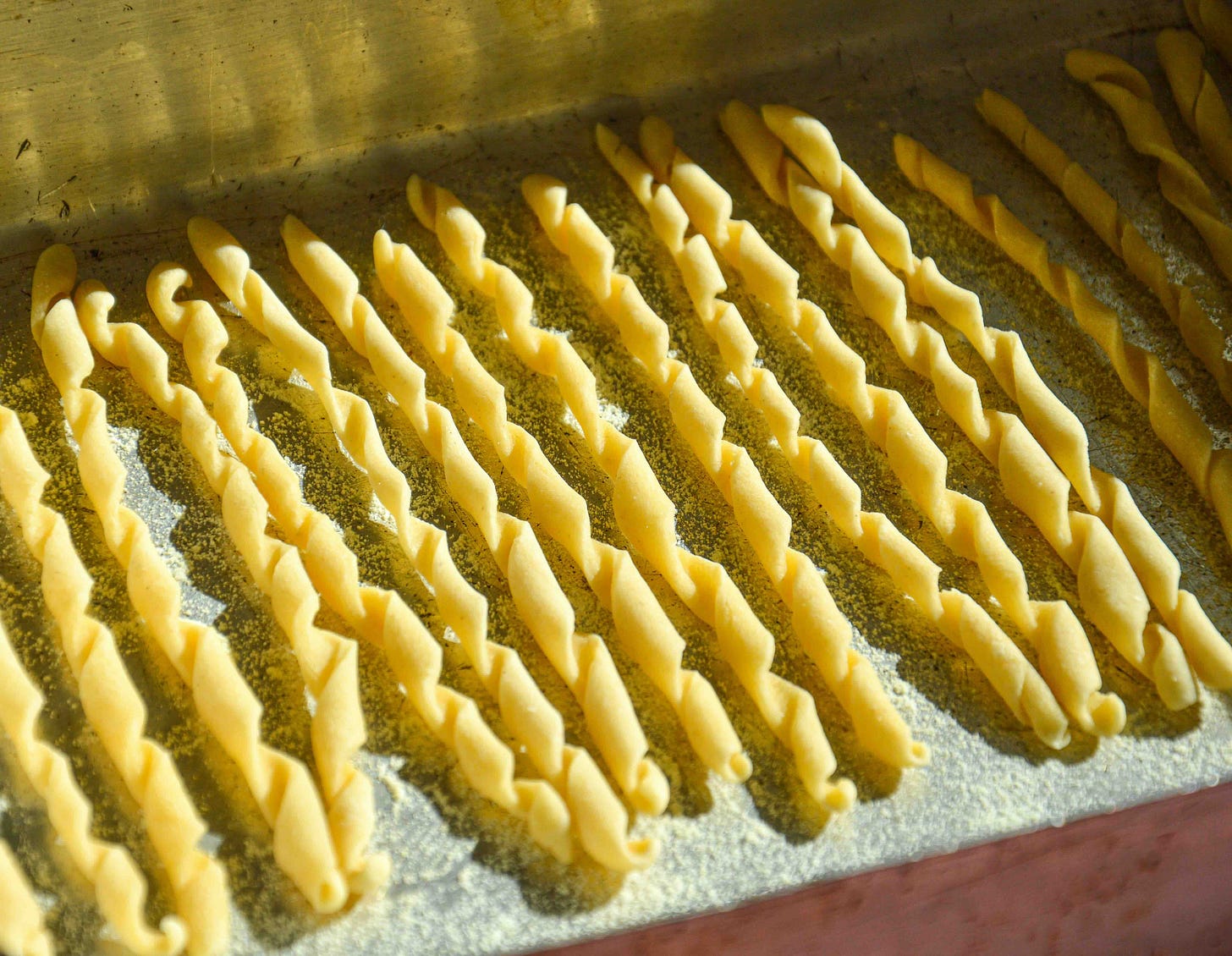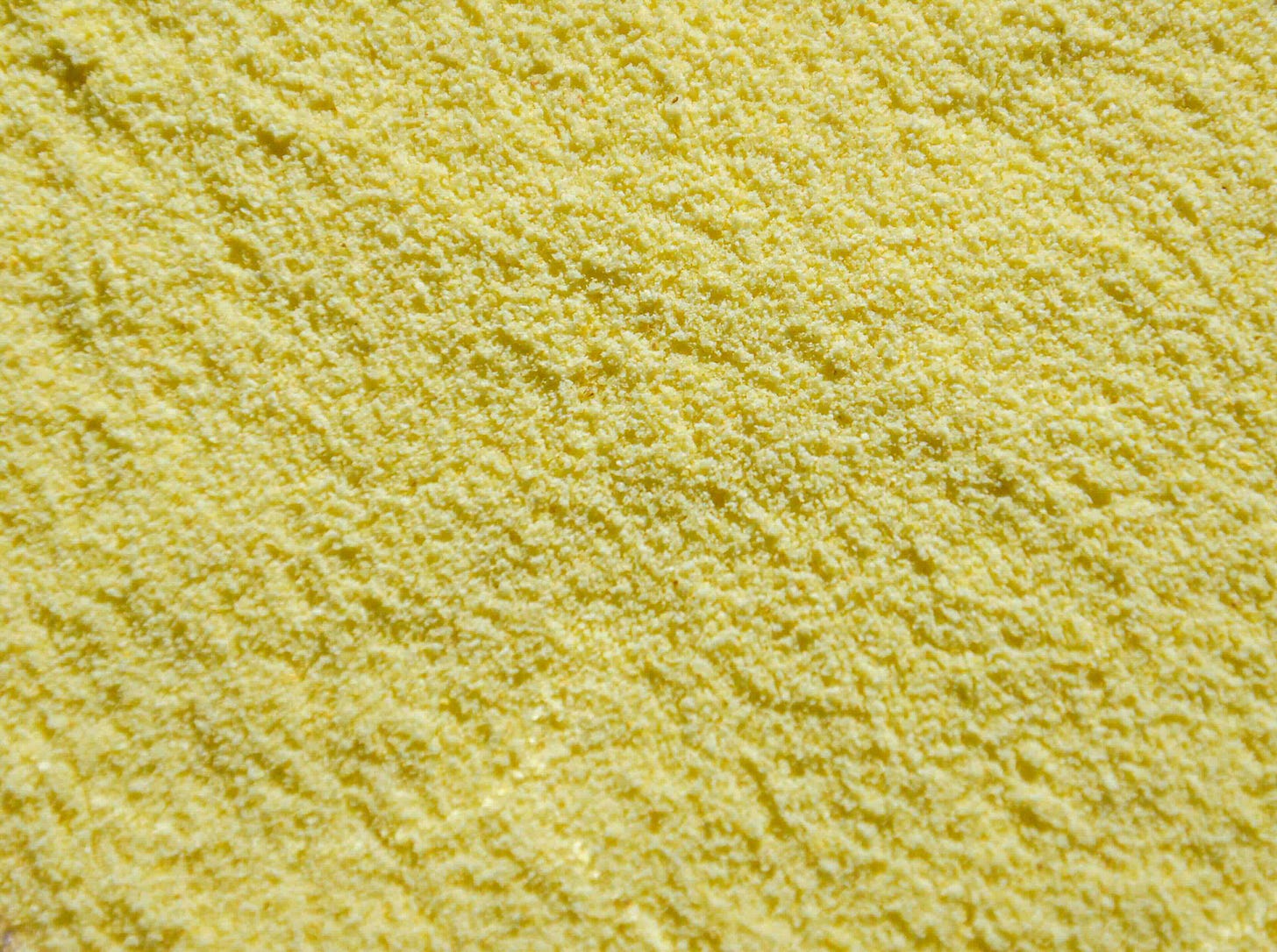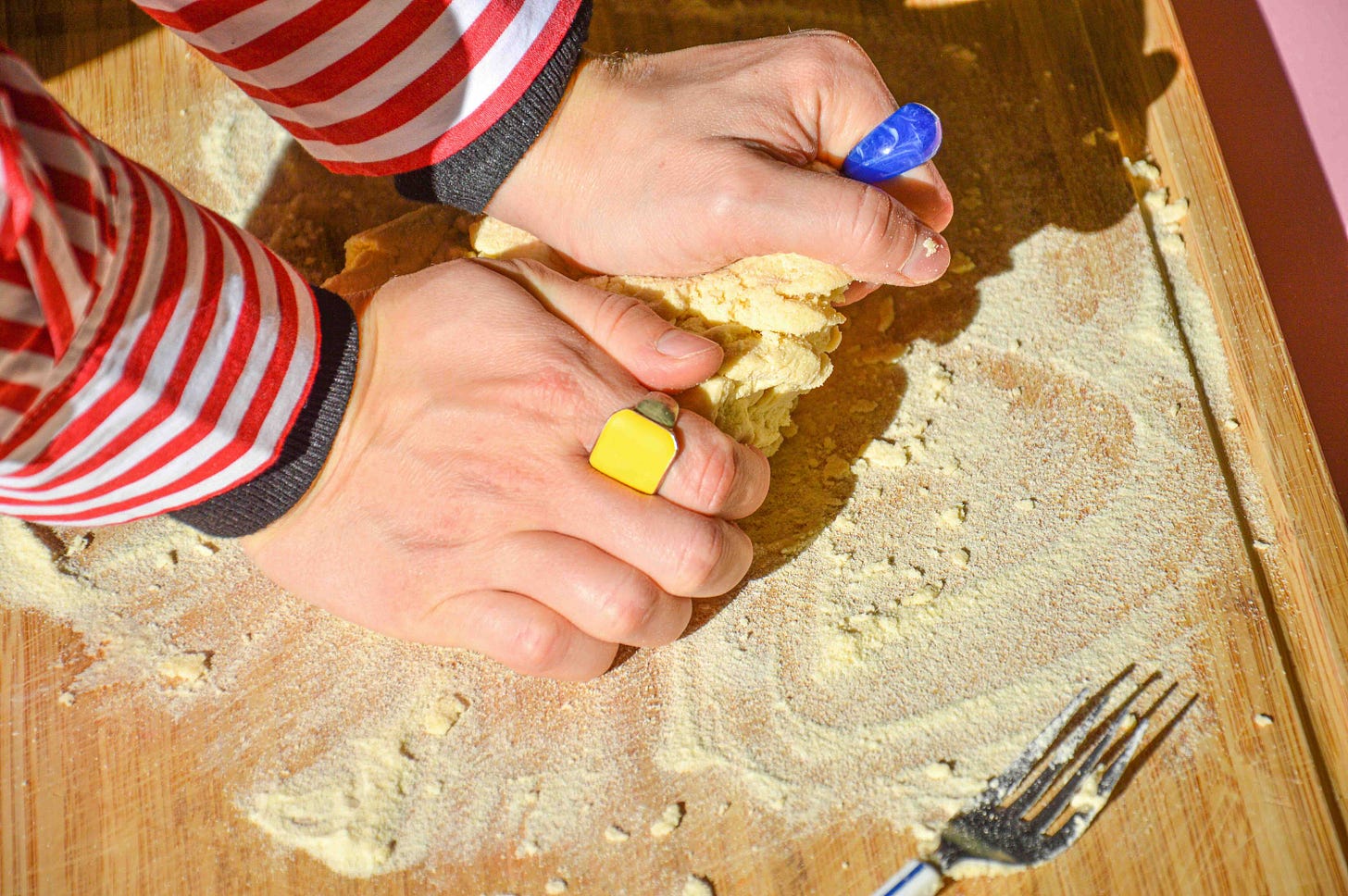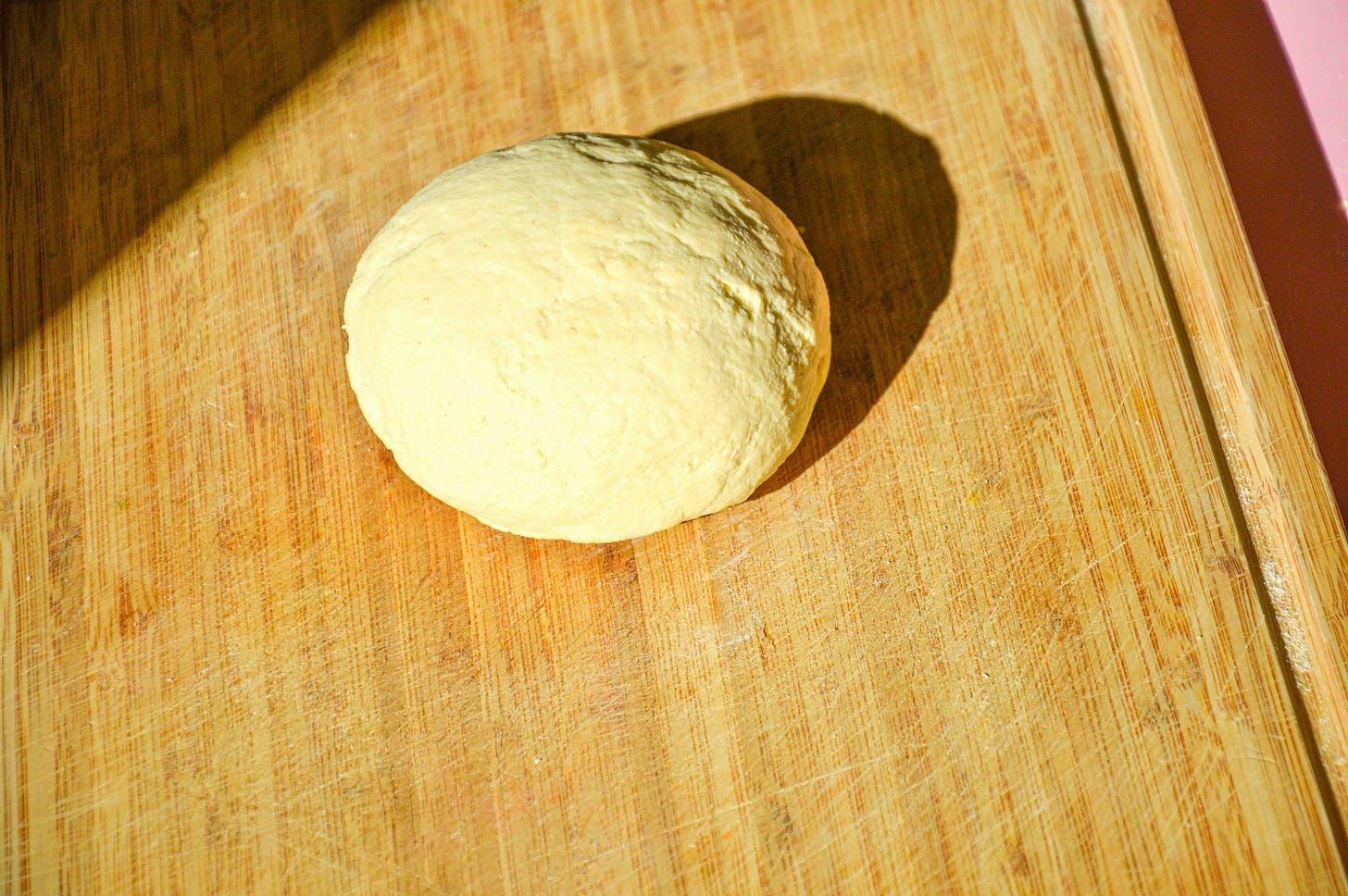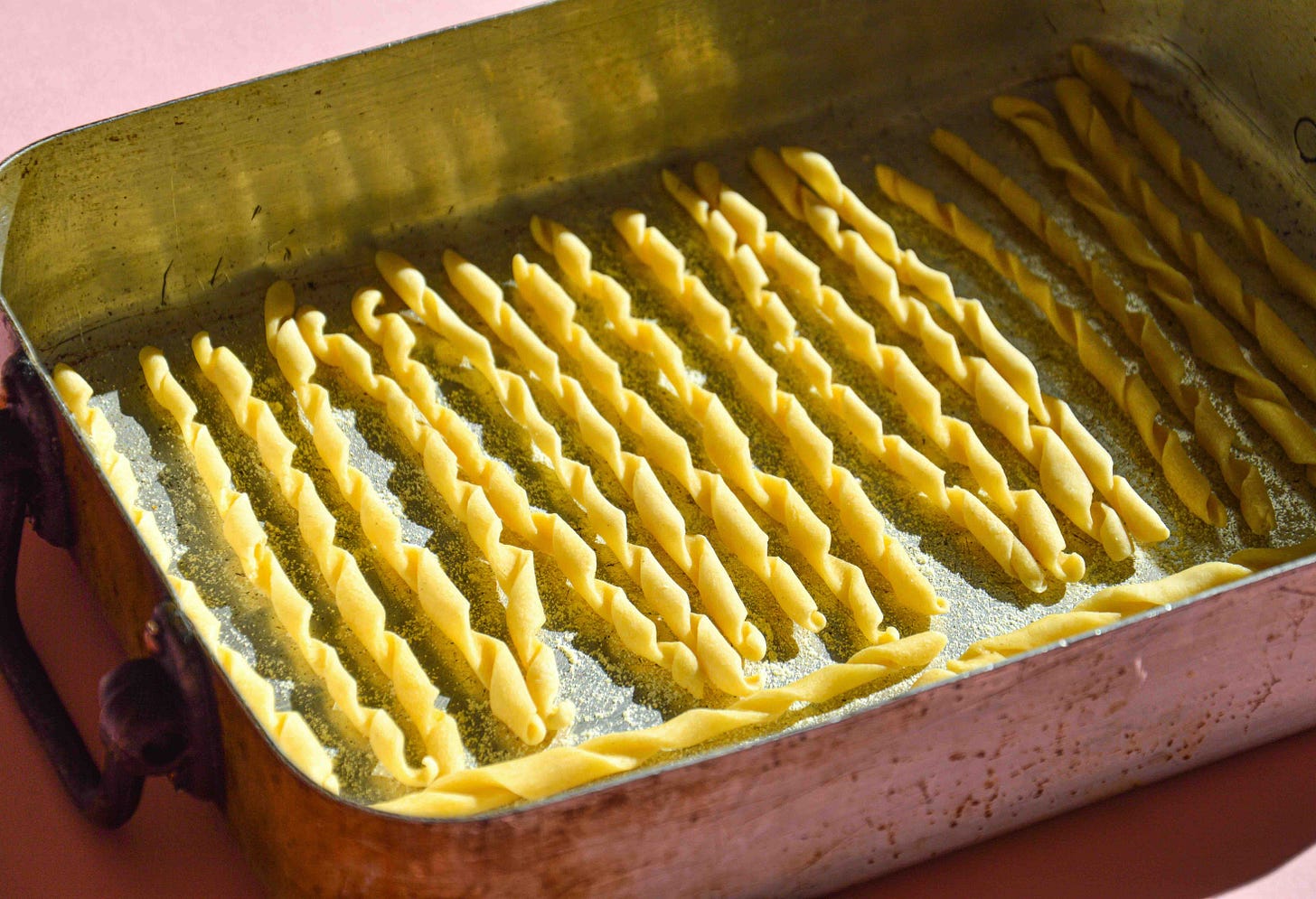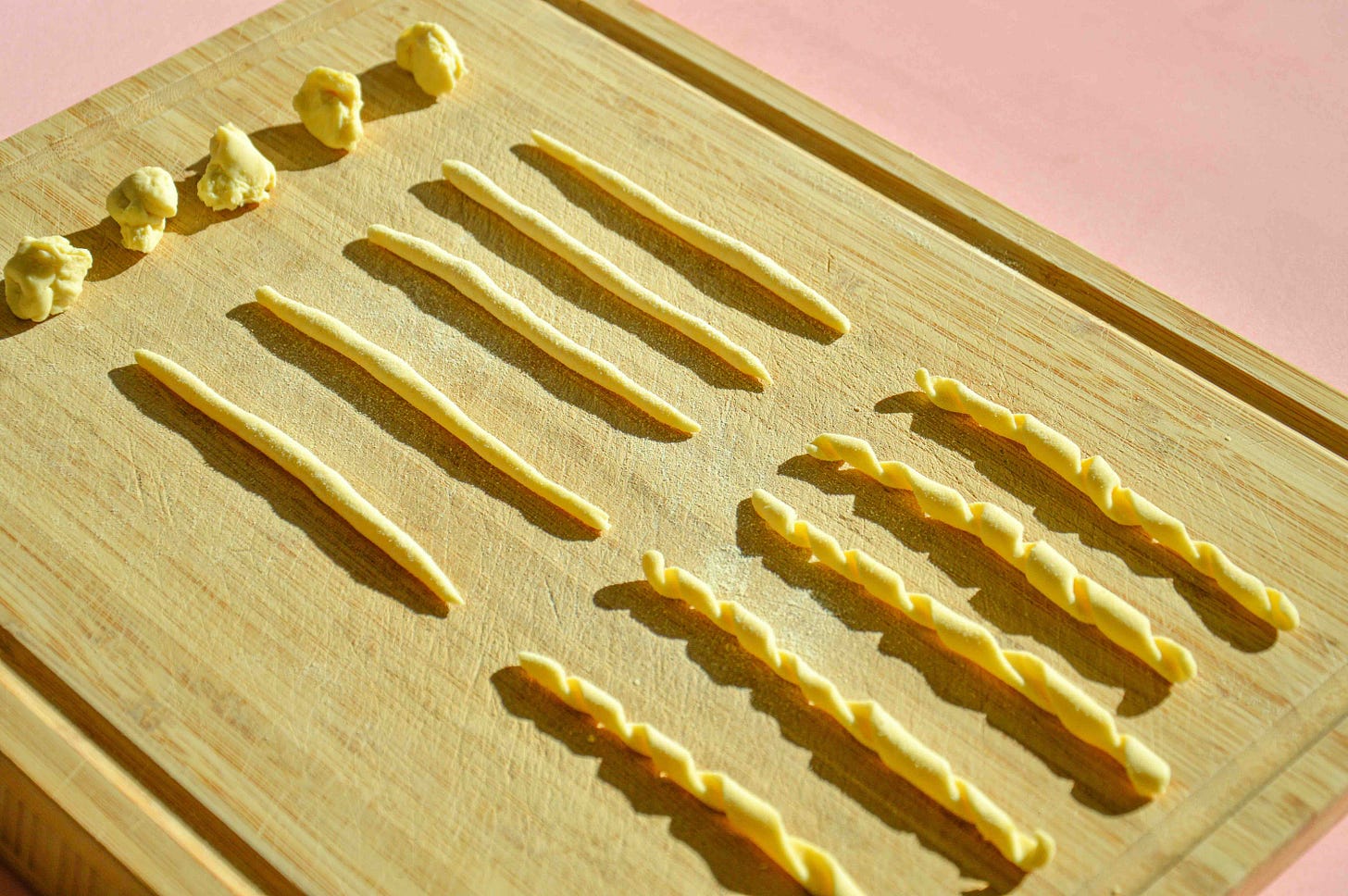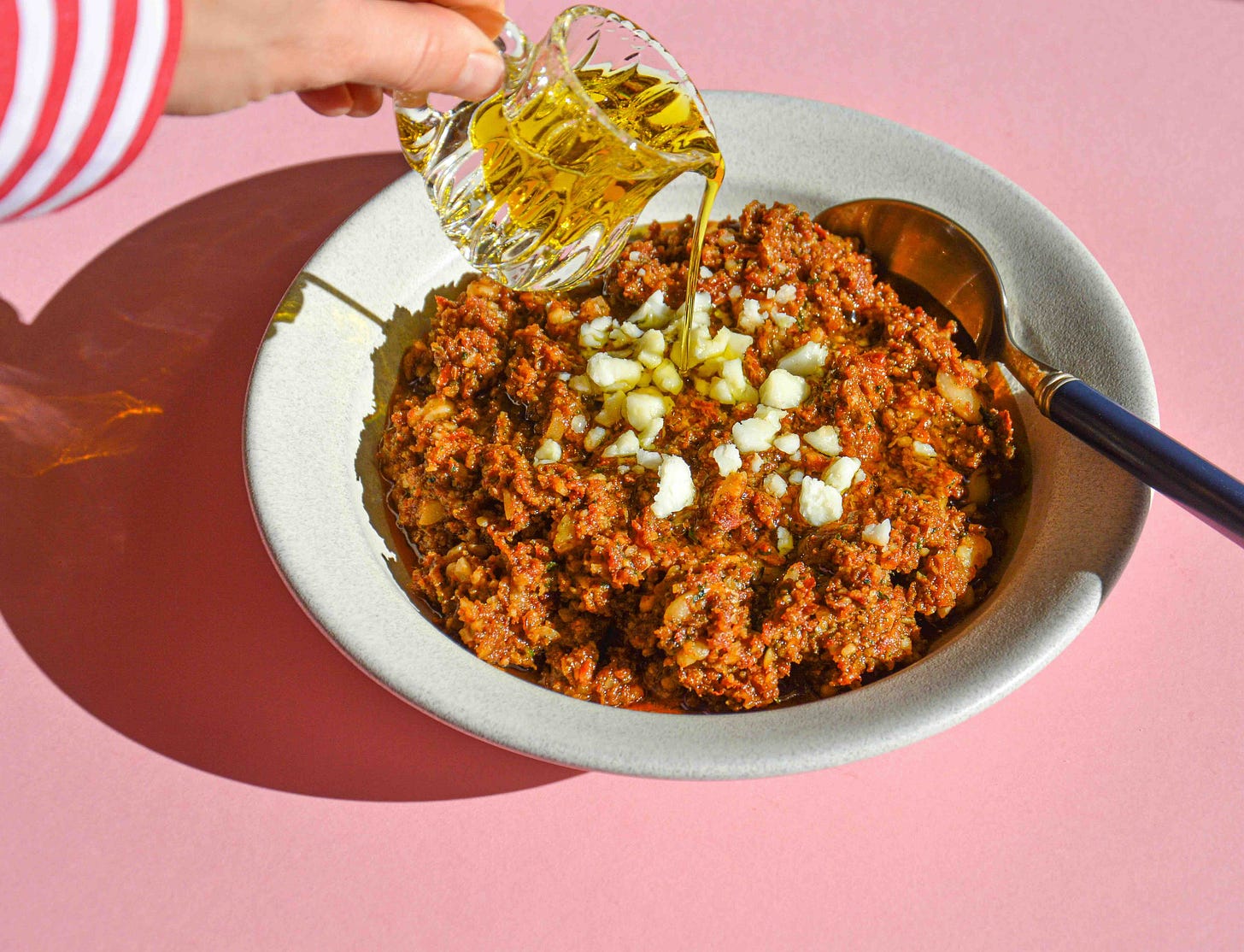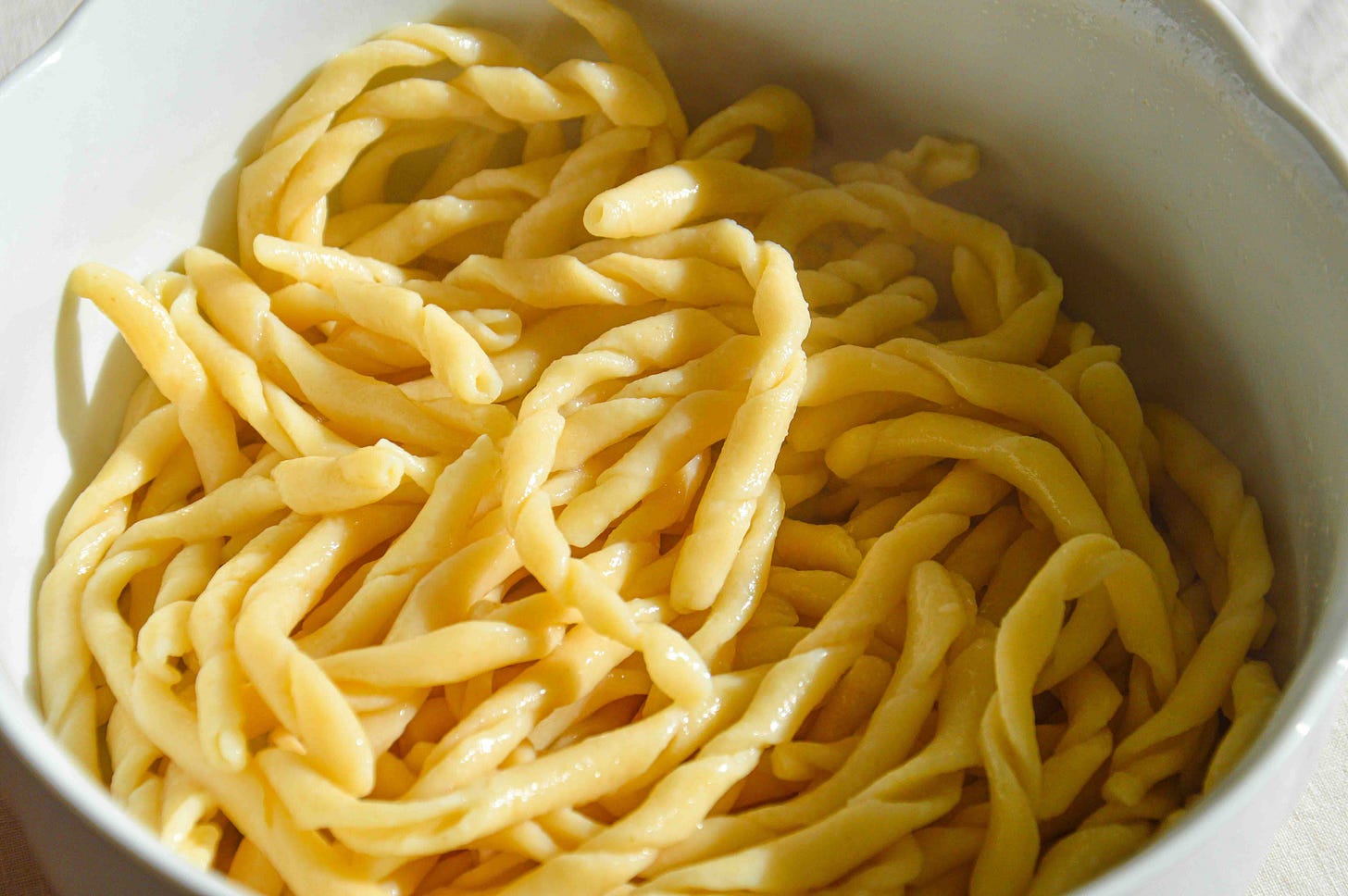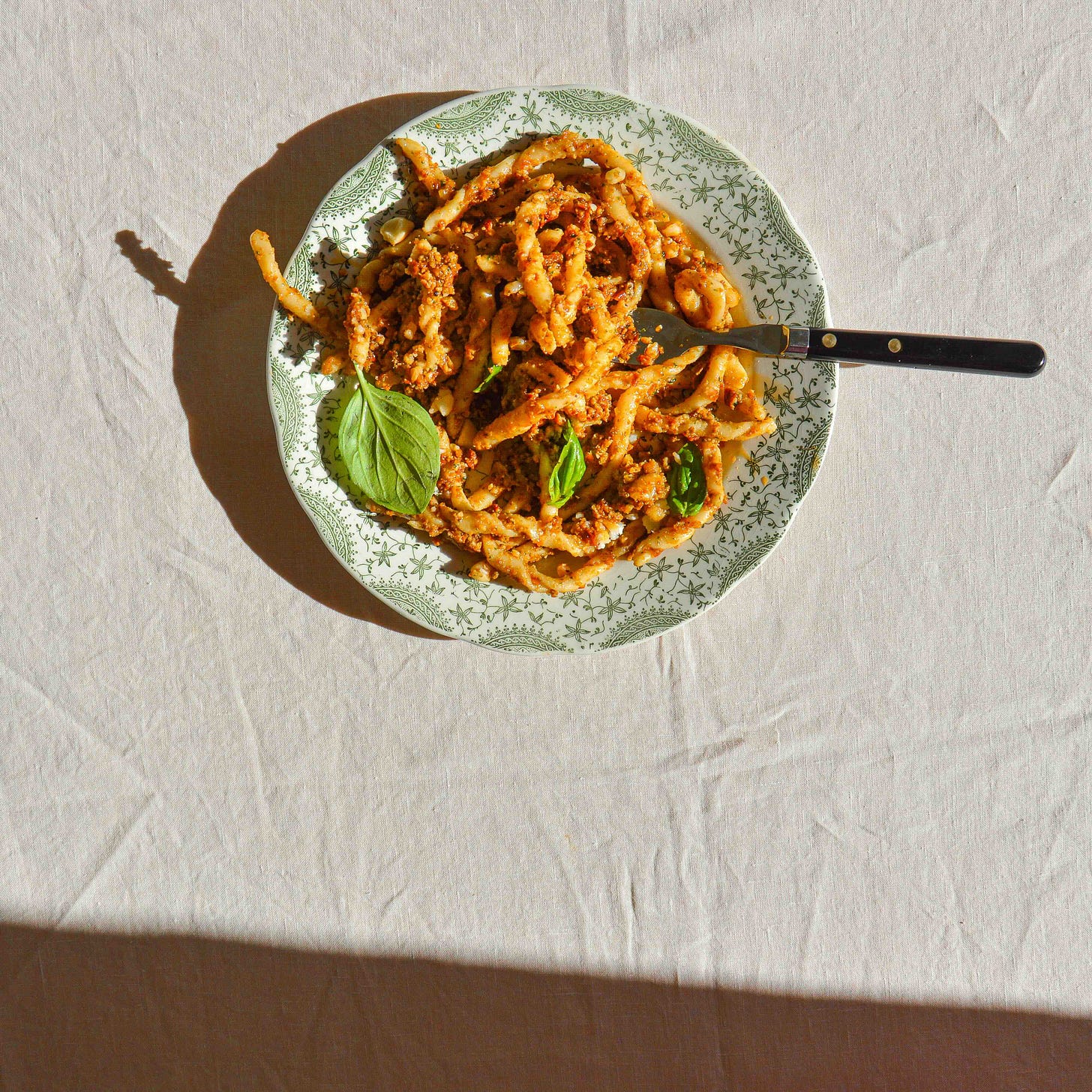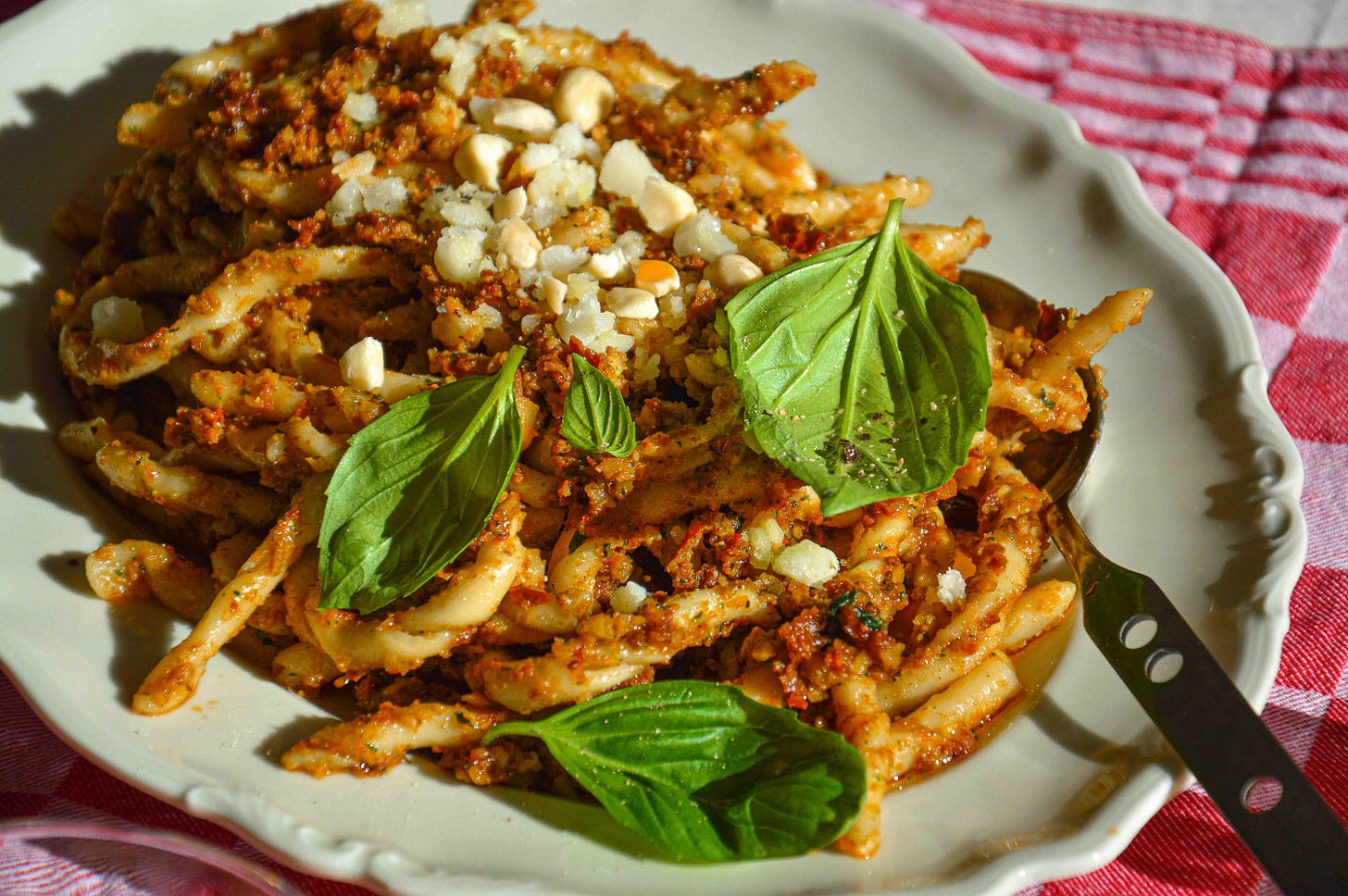Pesto alla Trapanese with hand-made busiate
Serve: 4
Ingredients
Dough
400g semolina
200g warm water
Pesto
230g dried tomatoes + 40g oil from the dried tomatoes
100g skinless almonds
1 garlic clove
30g basil leaves
60g pecorino
180g extra virgin olive oil
sea salt
black pepper
Extra note
Pesto alla Trapanese is traditionally made with fresh tomatoes but since they’re out of season in Italy right now, I’ve opted for high-quality dried tomatoes instead. If you feel like using fresh tomatoes, go for it! Just remember to peel and deseed them. To skin, make a small ‘X’ incision on top of each tomato, then blanch them in hot water for around 30 seconds. Once the skin begins to peel away, remove the tomatoes and transfer them to ice water. After cooling, slip off the skin with a small knife, cut the tomatoes in half and scoop out the seeds.
The pasta needs to be dried so that it maintains shape when cooking. Prepare it well ahead of time, ideally a day before serving.
To shape the pasta into spirals, you will need a ferretto, a skewer-like tool. I used a wooden skewer, but a chopstick would work just fine.
Making the pesto in a mortar works best, but if you do not have it, use a blender remembering to leave a texture quite coarse and avoid turning it into a smooth paste.
Don’t cook the pesto! Serve it at room temperature, stirred into the warm pasta.
Method
Pasta dough
Place semolina on the counter and make a well in the middle. Add warm water to the centre and stir the flour into the liquid using a fork (check the gif below). Don’t add all the water at once and start with about 3/4 of it. If the flour is too dry, add more liquid. Remember that the amount of liquid depends on the humidity of the environment and the flour, so you might need to adjust the amount slightly.
Form a shaggy ball with your hands, then knead the dough. Press the heel of your palm in the middle of the dough and start stretching it away from your body. Fold the dough, press down and rotate it. Repeat the process. In the beginning, the dough might be quite dry and hard to knead, but give it a bit more time and it will improve.
Knead the dough for 10 minutes. The dough will not be perfectly smooth yet (see the photo below for reference).
Cover the dough with a clingfilm to prevent drying and let it relax for around 30 minutes.
Shaping the pasta
Give the dough a few more kneads until you achieve a smooth ball. Lightly press the dough with your finger - if the dough bounces back, it’s ready to use. Here’s how the dough’s texture changed from the one above:
Cut away 5 equal pieces from the dough with your hand - each piece weighing about 5 or 6 grams (see the gif).
Cover the rest of the dough with a cling film and set aside.
Work with one piece at a time. Roll it out into a long thin rope (about 14cm) with your fingers to ensure even thickness. Repeat with the other 4 pieces.
Grab a skewer and roll the rope around it as shown below. If your dough is quite warm and soft, sprinkle a small amount of semolina over the rope before rolling around the skewer. Repeat the process with the remaining 4 ropes.
Place the pasta, wrapped around the skewer, onto a wooden board and gently press to flatten the dough. Carefully slide the pasta off the skewer and set aside to dry, ideally overnight. Perform the same steps with the rest of the 4 rolled pieces.
Once you finished with the first 5 pieces of pasta, take the dough and repeat the whole process. Be sure to let the busiate dry in a single layer before cooking.
Here is a full video of shaping the pasta:
Pesto alla Trapanese
Whenever I make pesto, I opt for a sturdy mortar I picked up at a Thai shop some time ago. Start by roughly chopping the dried tomatoes into smaller pieces to make them easier to grind later.
Add the garlic clove to the mortar and pound it into a smooth paste. Next, toss in the skinless almonds and crush them coarsely for a chunky texture. Follow with the dried tomatoes, then fresh basil leaves, and continue pounding into a paste (check out the photo below to see the texture of the pesto). Keep in mind that pesto alla trapanese has a much rougher texture than the smoother pesto alla genovese.
Crumble in pecorino cheese, then season with salt and black pepper. Stir in the olive oil into the pesto and combine well. Set the pesto aside.
Serving
Bring water to a boil and season it with a generous amount of salt.
Once it’s boiling, add the busiate and cook for about 7 minutes or until al dente.
Fish out the pasta and place it in a bowl, add the pesto, about 3 tablespoons of pasta water and mix.








